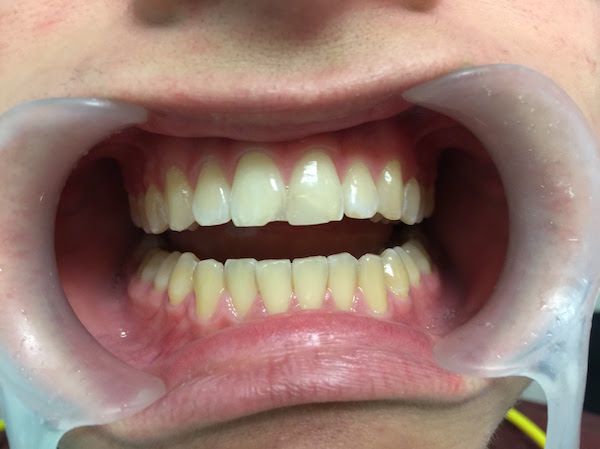Periodontal diseases (Gum Disease)
Periodontal diseases (also known as gum diseases) are infections of the gum and bone that hold teeth in place.
If your gums are tender or bleeding, chances are, you have gum disease!
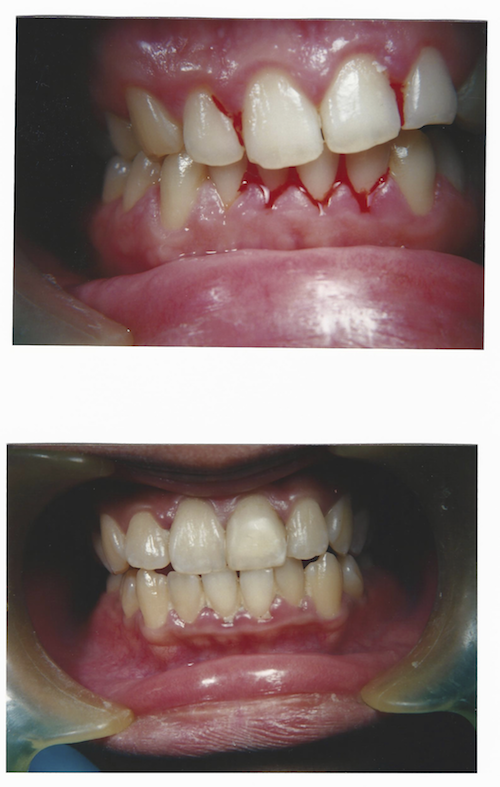 Bleeding gums normally indicates a gum problem
Bleeding gums normally indicates a gum problem
An infectious disease that starts between your tooth and your gum
Bacteria live there, and when too many move in, they form plaque
Plaque and tartar irritate your gums, which swell and bleed
Serious gum disease is called periodontitis
Severe periodontitis damages your gums and your teeth,
Your teeth can fall out and your overall health can deteriorate
Periodontal diseases are often painless and you may not be aware that you have a problem until your gums and supporting bone are seriously damaged.
The good news is that periodontal diseases often can be treated in the early stages with a treatment to clean your teeth called scaling and root planing.
Treatment has huge benefit. You will increase the chances of keeping your natural teeth.
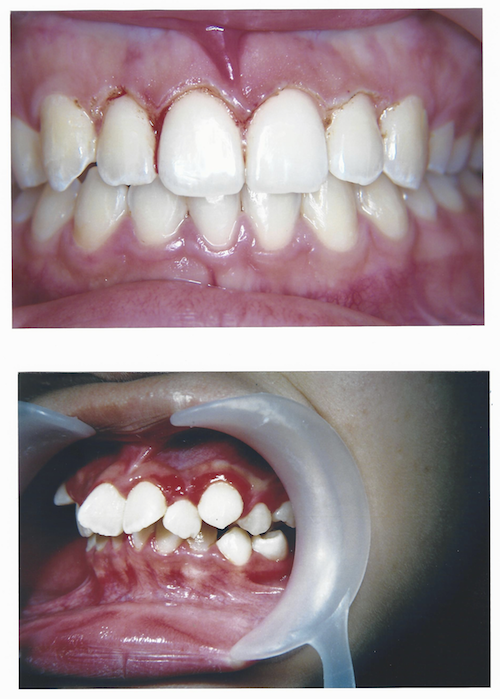
If your gum bleeds during brushing, don't hold back, this probably means that your gums are "dirty" and not "hurt' by brushing
What Causes Gum Disease?
Plaque is a film of bacteria that attaches to teeth and gums. The bacteria in plaque cause irritation of the tissues that support your teeth. This irritation can lead to chronic inflammation, bleeding and swelling that can destroy your gum and bone tissue.
Plaque that is not completely removed may harden into rough, porous deposit called tartar, or calculus. Tartar by itself does cause disease, but it typically allows more plaque to form and makes it more difficult to remove plaque that can thrive on, in or near tartar. The only way to remove tartar is to have your teeth cleaned at the dental office. More importantly, plaque is always forming even as you sleep. Thus, regular visits to the dentist are necessary to remove plaque and calculus in hard-to-remove places.
- Not brushing and flossing everyday
- Dry mouth — saliva washes away bacteria
- Foods with too much sugar e.g. kuih, milk coffee and tea, desserts, sweets and chocolate, soft drinks
- Using tobacco in any form
- Changes in the body during pregnancy
- A history of gum disease in your family — increases your chances of getting it
- Diabetics easily get infections (such as gum disease)
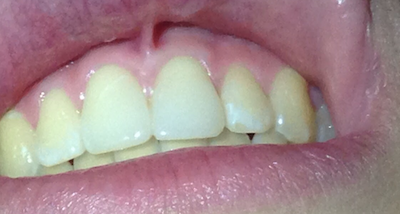
Healthy Gums
Gums which are healthy looking (do ignore the front tooth fillings)
Signs and symptoms
Healthy Gums
When your gums are healthy, they are pink and firm.
Gingivitis
Your gums are tender, reddish and may bleed when you brush your teeth.
Early/Moderate Periodontitis
Your gums start to pull away from your teeth, leaving a gap or pocket.
Harmful bacteria build up; gums get more irritated, infected and bleed easily.
Your teeth get more sensitive because more root is exposed.
Food tends to get lodged in the gums and you find difficulty in removing them from the gums.
Bad breath
Advanced Periodontitis
Bacteria spread; you lose gum tissue and bone that support the teeth.
Gums pull farther away.
Your teeth get loose, shift position and can fall out.
periodontal-disease-diagram-dentistsnearby
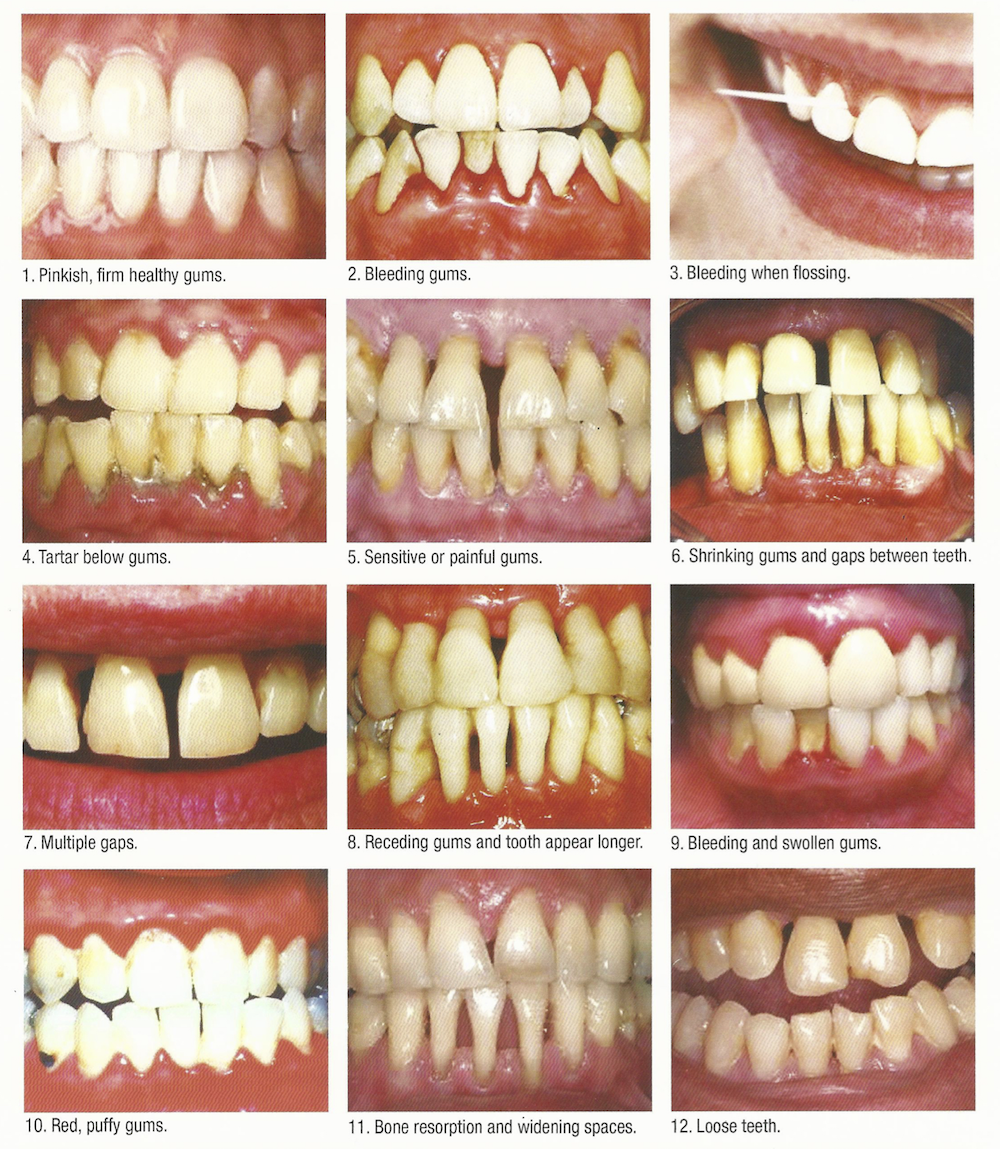
Treatments
Professional treatment plus better brushing and flossing may be able to reverse some damage caused by periodontitis. Catching it early and taking action is the best way to stop it.
The natural tooth is always better; avoid extraction.
Fight gum disease with proper care
Learn to remove plaque by brushing properly without damaging the enamel.
Brush the gum as well.
Plaque tends to settle at the gumline.
Your dental professional may recommend using:
- a power brush
- a prescription toothpaste
- a prescription oral rinse
- Floss every day to remove plaque between teeth.
The interdental brushes, which come in various sizes, are useful too.
Do not miss appointments with your Dental Professional.
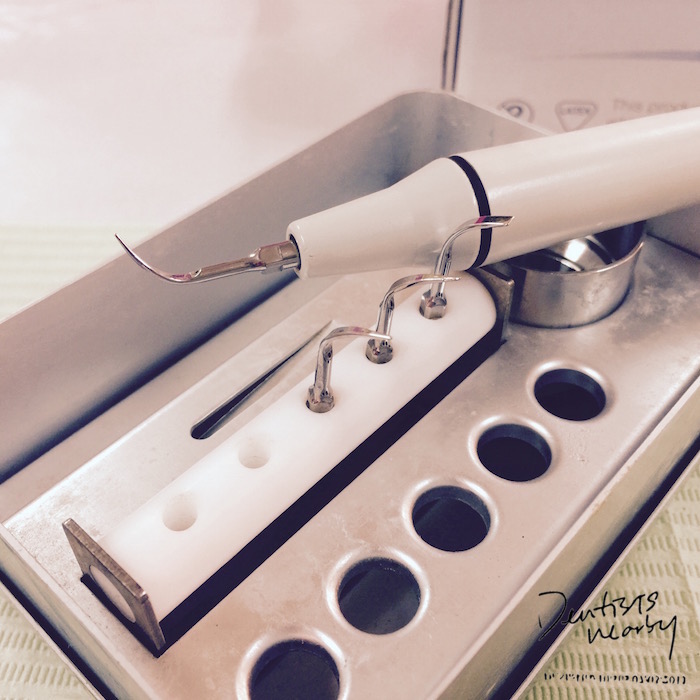
Professional Dental Scaler Unit
You may also need professional treatments to fight advanced stages of gum disease.
Scaling and root planning
Prescription medicine
Flap surgery — the gums are cut open to remove the infected gum.
Bone grafting — artificial bone is used to replace bone loss around the teeth
Toothbrushing technique
Enjoy brushing your teeth just like you enjoy a shower or a hairwash.
In fact dental health is so important.
You cannot smile without teeth
You cannot eat without teeth and etc.
Poor dental health is one of the main causes of BAD BREATH.
When do you brush your teeth?
Twice a day: morning and night before you go to bed.
How do you brush your teeth?
1. Brush in a up and down motion.
2. If the teeth are not properly aligned ( crooked teeth) then brush according to the alignment of the teeth.Be creative.
3. Brush each jaw at a time.
4. Brush right to back teeth. Don't leave out the back tooth.
5. Do brush the gums too. Plaque always settle at the gumline.
6. When the gums bleed during brushing it means that there is some form of gum disease. Do continue to brush the area.
Make an appointment with your dentist for further treatment.
If bleeding still persists then seek medical advice.
Duration of brushing
Do spend at least 2 minutes to brush your teeth. Gargle vigorously.Enjoy the whole process of brushing your teeth.
Choice of toothbrush
Toothbrushes come in all shapes and sizes
1. Bristles
Bristles that are slender at the tip can reach deeper into the gum. This is an advantage to remove plaque.
Some toothbrushes have very compact bristles and they are tapered. this means that it has better cleaning power.
Soft & tapered toothbrushes are able to "reach" to hard to reach places easily compared to bristles which are "big". Your tight interdental spaces should be clean thoroughly by a combination of a good quality toothbrush along with a robust toothbrushing technique. Soft bristles are also gentle to the gums and will be beneficial to patients which are suffering from gingivitis (gum disease).
Bristles that are too stiff and hard are too abrasive and may hurt the gums. Furthermore, if a hard bristle toothbrush is coupled with wrong toothbrushing techniques, it will cause what we call a Class 5 abrasion cavity which will induce sensitivity near your gum line. Bristles that are flexible can reach into the interdental area. Hence, if you are not sure that you're employing the correct toothbrushing technique, it will be beneficial if you buy a soft bristle toothbrush at first
2. Head of the toothbrush
A tapering head allows accessability to the back of the jaw. Furthermore, they also allow easier access and mobility to the back side of your teeth. which in turns provide better cleaning actions.
3 .Automated toothbrush
Some have sonic vibrations
Some have oscillatory movements.
Article Written & Contributed To DentistsNearby.com By
Dr. Tan Ai Hooi - BDS (Malaya) , FICD
Tan Dental Clinic
Address: No.11, 1st Floor , Jalan SS 2/75 , 47300 , Petaling Jaya , Selangor , Malaysia .
Phone: 03 7876 6812
Featured Message By Systema



